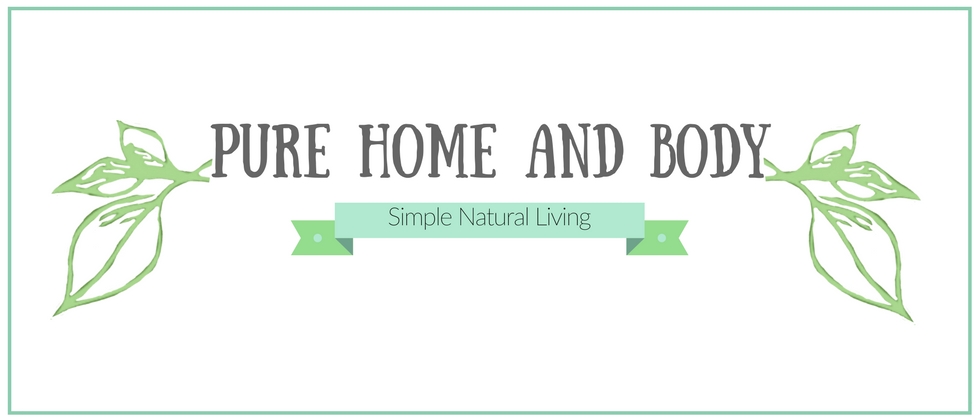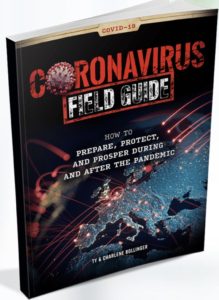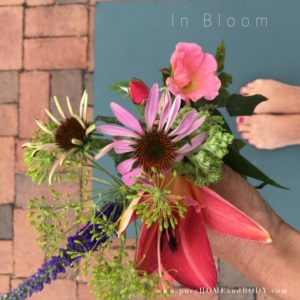Summer is in full bloom, plants are filling out and the garden is starting to produce a harvest. What is growing in your yard? It’s all good until some insects arrive to make a feast of your annuals, perennials and vegetables. Over the years I’ve dealt with pesky little insects that have even fed on my hardy herbs. I finally pulled out the sage plant this spring that I think was the home of some persistent bugs that moved over to my oregano, lemon balm and lavender. I’ve also been implementing a lot of natural remedies to keep everything in balance including wonderful, pure essential oils.
I’ve used some of Jerry Baker’s techniques over the years, mixing tobacco juice (that was a fun conversation with the kids :)), epsom salts and all kinds of natural ingredients that I can hardly remember. What did stick was a comment he made about castille soap giving bugs a tummy ache. The past two years I’ve just mixed up my own concoctions that are not really scientific, but they are working.
GreenWashing in garden care There are plenty of companies in the garden industry that are green washing their products to appear more natural (Surprised?) There is an entire industry that produces synthetic essential oils and essential oil ingredients. Essential oils are filled with natural components that garden pests hate without the toxic chemicals. DIY and you’ll be certain of what is being sprayed on your plants. Just do a little research to make sure you’re using ingredients that are safe in the garden. This is a place I’ve used those old citrus oils that wouldn’t taste as fresh. I absolutely do not use anything questionable in my organic garden, if you have any oils that just don’t smell right and you’re unsure of their quality for personal care use, use them to clean. Save your best quality oils for personal use. Just like human use, more is not necessarily better. Don’t throw the baby out with the bathwater and kill your plants just to get rid of the bugs. For the safest garden, do not spray anything when produce appears.
Quick Chemistry Lesson:
Essential oils are filled with amazing components that occur naturally. How can you know if your oils is quality? Read on to learn some basics about essential oil chemistry and how to identify synthetics on a product label. You’ll save money and give your family & yard the best!
Man has made hybrid plants (crossing different species of plants to create new ones), GMO plants (that are engineered from seed to have specific properties, like Round Up Ready Soybeans & Corn that can withstand round up weed killer: the weeds die but the plant lives on) and synthetic oil components. For example:
Pure unaltered Lemongrass essential oil contains (not the complete chemical make-up, for space sake):
42.20% Geranial & 31.8% Neral (Geranial + Neral = the aldehyde Citral)
3.90% Limonene
3.70% Piperitone
2.90% d-2-carene
2.8% Geranyl acetate
2.3% b-mercene
2.10% Geraniol
1.30% Linalol
(RJ Buckle Clinical Aromatherapy)
Man has figured out how to make synthetic essential oil components, in fact there are many books written with the manufacturer’s “recipes”. Surprisingly, synthetic oils have been around as early as the mid-1800’s when French perfumers figured out how to do it and discovered it was much cheaper (and easier) than growing crops of real plants and dealing with the distillation process. Yes, in European countries they value pure, Therapeutic essential oils in their health and wellness, but also see synthetics as a good option for “cosmetic” purposes. In the United States, we are still defining these parameters so it’s up to consumers to discern what is pure, what is synthetic, and what is really therapeutic. Hopefully this will help you when you’re reading labels.
To give you some perspective, David G. Williams explains it well stating “Two very important isolates of modern perfumery separated from Turpentine Oil by vacuum fractionation, are the monoterpenes alpha- and beta-pinene. These products are used in vast quantities for the manufacture of synthetic terpenoid aroma chemicals, including citral. the isolation of citral from Lemongrass or Litsea cubeba oil affords an alternative, though more costly,source of supply of this valuable chemical. Manufacturers can produce synthetics without the “baggage” of the other components, or without the burden of growing and distilling crops to get one or two constituents.
So, when you read labels whether on garden insecticides or personal care items, it’s not unusual to see individual components from essential oils:
limonene, geraniol, geranial, citral, cinnaol, thymol….these are most likely synthetic isolates.
Now down to business, taking care of pests. The first step is Common sense. Remove what bugs you can manually, place plants with enough space so bugs have fewer places to hide and take advantage of planting native plants to your area. They will naturally be better at resisting the local bug force. There are a lot of good natural products at the garden center, just make sure you read labels. Here are some good ready made essential oil insect sprays I’ve found:

This soap shield has 10% active ingredients listed, 90% inert! not listed to the consumer. Aren’t you curious about what those 90% are?
Both contain powerful essential oils that should be used with care. Strong essential oils can irritate the respiratory tract, so make sure you are using outdoors only and have the wind blowing spray away from you.
Here’s my own blend I mix up before each use:
In a 32 ounce bottle add
1/4 c castille soap (I use Dr. Bronners in any scent)
1/4 C Listerine mouthwash (has some essential oils in it, quality is most likely not “therapeutic”)
5-7 drops each of 3-4 essential oils of your choice (I use “hot” oils like cinnamon, clove, cassia, lemongrass, oregano, thyme plus citrus oils like orange, lemon, lime, tangerine)
Label the bottle clearly with contents and purpose
Fill the remainder with water and spray your plants. Do not spray fruit or herbs that will be eaten! The exception to this is if you have a plant that is obviously dying from insect infestation like my lemon balm plants, spray them to control pests but do not harvest the plant until new growth appears. This will give you fresh plant material that has grown after the pests are gone. I’ve used this on a number of garden pests including Japanese Beetle aphids.
Label any mixtures you make yourself and keep out of reach of children, essential oil blends are powerful and the hot oils can irritate skin if you have a lot of skin contact. Other than that, they are most likely an excellent alternative to chemical filled or mystery ingredient sprays.
Enjoy your green garden!
















What about eucalyptus? I’ve heard that is good for garden pests.
Yes, Steve, several eucalyptus species have shown effective against garden pests as well, Eucalyptus globulus, Eucalyptus citriadora, Eucalyptus dives, Eucalyptus radiata. Depending on what pests:
Mosquitos, including the Aedes aegypti species which carries the Malaria and Zika viruses: http://link.springer.com/article/10.1007/s00436-006-0184-1#/page-1
There are many essential oils used for varying purposes with insects: to decrease reproduction, cut down on feeding and those that are just plain toxic to the bug. If you want to target specific insects, check out scholar.google.com to find the research that best suits your need. This paper is a good start: http://www.annualreviews.org/eprint/IbA58Imu4RCuBcyc4uUi/full/10.1146/annurev-ento-120710-100554
Cheers!